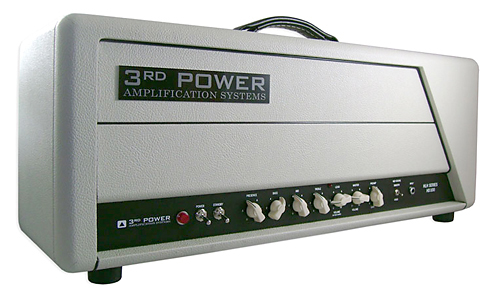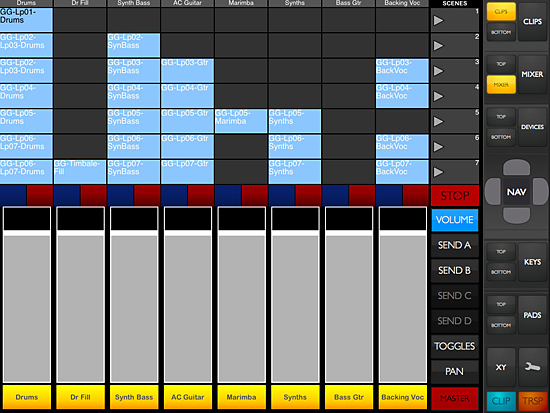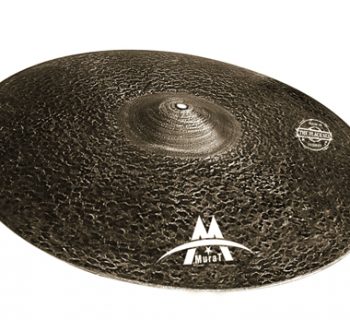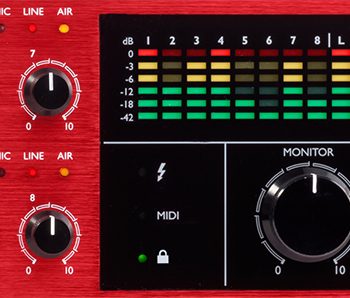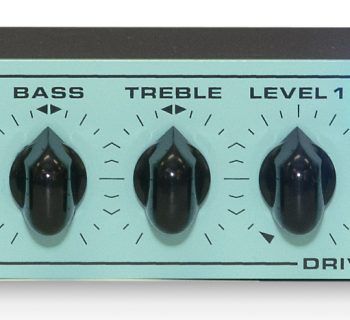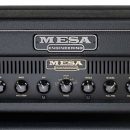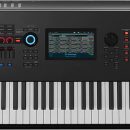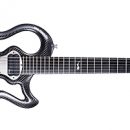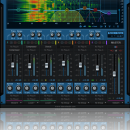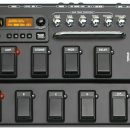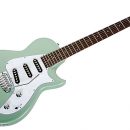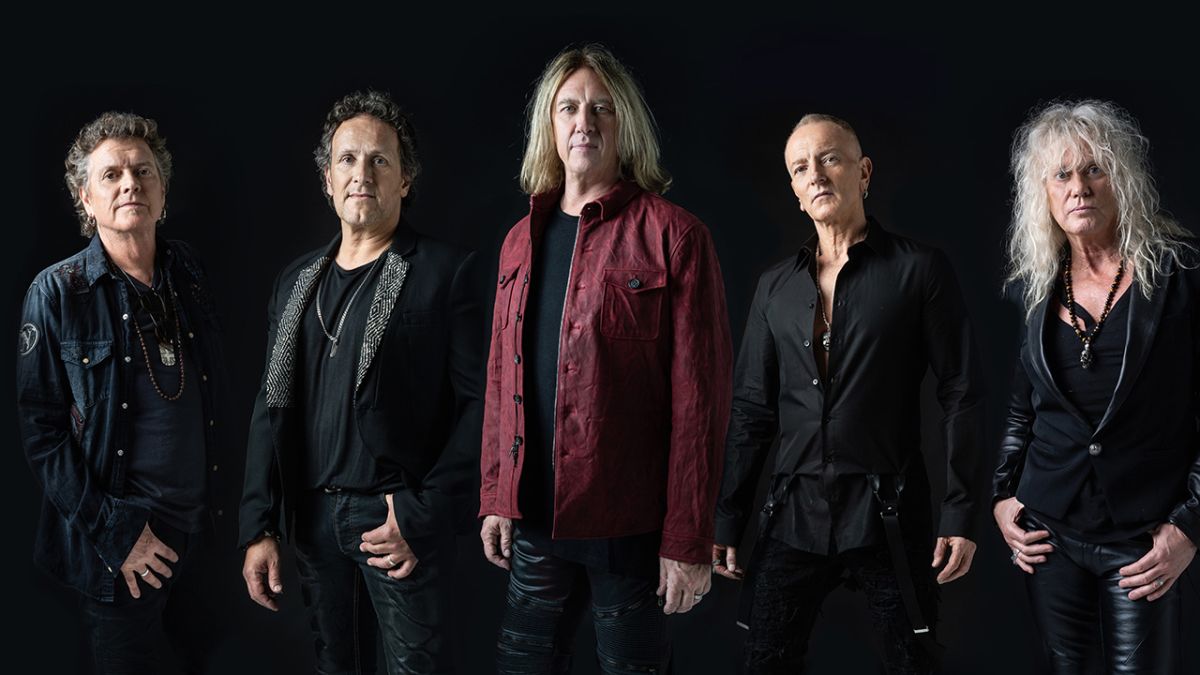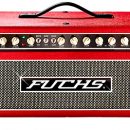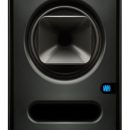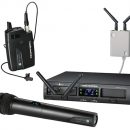3rd Power really impressed us with their line of amps at Winter NAMM 2011, so much that it was difficult to decide exactly which of their products we wanted to review first!
Although not a new release like their well-received American Dream and British Dream amps, the HD100 tugged at our classic hard rock heartstrings and was the first amp in their lineup we decided to take a look at.
While this amp may seem like just another “Hot-rodded Plexi” clone, to pigeonhole it in this way is to do it a real disservice. Yes, the amp is indeed inspired by the classic circuits of the past, however 3rd Power have added enough unique and/or proprietary technology to the HD100 to set it apart from other more common amps in what is, quite frankly, a flooded market segment.
The HD100 nails classic “brown sound” tone — but does so without any noise, and it sounds great even when you don’t crank it up. Some unique sonic properties enable it to sit beautifully in the mix, and the tight response will appeal to players who love the classic Marshall tone but need something with a more aggressive attack to match their playing style.
Features
![]()
The HD100 amp is a single-channel amplifier hand-built/wired/designed by 3rd Power in Nashville, Tennessee. It features 100 Watts of power delivered by three 12ax7 preamp tubes (one Tube Doctor, two JJ) and four JJ EL-34 power amp tubes.
The design starts in classic hot-rodded Marshall Plexi territory, but Jamie Scott used his background in recording and mastering and applied some interesting tweaks to the tried-and-true formula to make the HD100 a bit more unique than some of its boutique brethren.
The front panel sports a traditional interface and will be familiar to any guitarist, with a simple tone stack (Presence, Bass, Mid, Treble, Master Volume, Gain) and a Lead Volume control that enables you to set a footswitchable volume boost that doesn’t change the character of the amp’s distortion tone.

Historically, when 3rd Power founder Jamie Scott would record artists in the studio who were playing vintage Marshall gear, he found that the Plexi tone stack didn’t cut well through mixes until he made certain tweaks to outboard EQ. A toggle switch labeled Mid Voicing provides some distinct 3rd Power mojo designed to bring that studio tone-shaping to the live rig and to help the amp sit better in a mix without resorting to external EQ.
In the Bold setting, the tone controls are set to the exact EQ points of a ’68 Marshall Plexi. But when set to the Smooth setting, the EQ points are shifted subtly to reduce the amount of emphasis placed on the lower mid frequencies while also filling in a bit of the midrange area that is cut from the classic circuit design (the Plexi circuit cuts approximately 3-6 dB at 1KHz).
One interesting amplifier design feature lies completely hidden, and it deals with the issues of heat dissipation and wear and tear on your amp components. Guitar speakers aren’t designed to reproduce frequencies above 5 KHz, but most amps send these frequencies to the speaker regardless. What follows is that the high frequency content is converted to heat in the speaker coil and discarded, but over hours of use, this fatigues the speaker. In a studio session where you amp may be active for day-long sessions, you may discover that over time, your tone seems to change subtly, requiring a trip to the EQ settings as you attempt to match the sound your amp had when it was first powered up at the start of the session. By filtering out these high frequencies in the power amp, the power transformer in the amp can operate more efficiently (it’s not processing unused frequencies) and the speaker coil doesn’t have the same amount of heat buildup over an extended period of time. While many players won’t hear a difference, this subtle design feature should translate into prolonged life of the components, and is of obvious benefit to session players.
On the rear of the amp, there are multiple speaker connections to accommodate a range of 4-, 8-, and 16-ohm cabinets. A series effects loop is present, labeled Preamp Out and Poweramp In. There are no level controls on the loop, thus it relies on your outboard effects gear for any gain control. The loop provides a hard break in the signal, so building a wet/dry rig will require the addition of a small mixer to return your dry signal to the loop return.

The head weighs 42 pounds.
Usability
![]()
The HD100 is as simple to use as any vintage, single-channel head could possibly be. Take it out of standby, dial in the EQ and gain, and off you go! Actually, before you do that be sure to visit the suggested tone settings in the owner’s manual — chances are you will not stray very far from these well thought out starting points.
Aside from an intuitive and decidedly “old school” tone stack, things couldn’t get any simpler from there. The effects loop for example is the common “insert type” (Preamp Out/Poweramp In) that all of us have used at some point and it certainly doesn’t require a degree in electronics to operate! We did however miss the addition of a level control due to the fact that sometimes relying on your outboard effect levels is not always reliable or practical. However, we should note that when using our favorite pedals in the loop, we did not experience any issues with volume drops.
The Lead control is an absolute godsend for those of us unfortunate enough to have experienced a show-stopping guitar solo buried in the mix, or waiting until mid solo for your soundman to “goose” your volume. By simply plugging an optional pedal into the back of the amp (any garden variety A/B style pedal or optional 3rd Power footswitch) you can use the Lead knob on the front of the amp to adjust your independent lead volume, thus giving you a few decibels of boost to bring your solos to the forefront. Quite frankly, we wish every amp had this feature.
So there you have it: certainly not a “Swiss Army Knife” amp, but certainly as plug-and-play and intuitive as it could be.
Sound
![]()
The HD100 can be summed up as sounding like classic “brown sound” tone without the noise, and with the immediate response of a Bogner Ecstasy.
We play tested our HD100 using a variety of guitars including a Gary Kramer Cathedral Deluxe (Super Strat) with Seymour Duncan JB/Jazz pickups, a Gibson Les Paul R9 Historic with PAF clones, a Gibson Les Paul Custom with Suhr Aldrich pickups, and a 1957 Fender Strat Reissue with Lindy Fralin pickups – phew! We paired the amp with a variety of cabinets including the fantastic 3rd Power SB312, a custom-built 4x12 cabinet loaded with Celestion Heritage G12G30s, and an Avatar 2x12 loaded with Celestion Vintage 30s.
It was a Les Paul plugged straight into this amp that at the 2011 NAMM show that grabbed our attention, so that configuration was a natural place to start. Using the EQ settings in the owner’s manual as a starting point, we wisely resisted the temptation to go directly to “Gains-Ville”, thus skipping over the tonal varieties on tap with the gain control in the 2:00-4:00 position.
In this setting, the amp delivers absolutely gorgeous clean or “clean on the verge of breakup” tones. Not Fender-clean mind you, but more like a vintage Plexi or Metal Face Super Lead in a low gain setting with the bright cap clipped (a popular Marshall mod to avoid “ice pick” highs). The sound was full and “snappy” and never fatiguing on our ears. Plugging in our vintage-style Strat, we were instantly taken to “Wind Cries Mary” and “Little Wing” territory. Squeeze, Pretenders, Beatles, and even chicken pickin’ tones were in the bag, too!
Turning the gain up to the midway point and with our two Les Pauls doing their thing, we easily dialed in convincing ZZ Top and Montrose tones. Cream-era Eric Clapton came easy as well, especially with our Fulltone Fulldrive Wah in front of the amp. It was at this point that we decided we prefer the amp’s Mid-Voicing switch set to the Bold position. To our ears, it still maintains the amps “Marshall on steroids” character while adding a bit of a modern influence as well. The Smooth setting, which seeks to emulate the tone stack of a ‘68 Plexi, sounds nice as well, but not quite as clear and defined as what we heard in the Bold setting.
After swapping our Les Pauls for the Gary Kramer super-Strat, we cranked the gain further clockwise and played some riffs made popular by that Dutch guy with the initials EVH. If this amp has any reputation at all, it is the amp’s ability to cop the fabled “Brown Sound.” Many boutique amps on the market attempt to stake this claim, however we believe 3rd Power has tapped (no pun) into an area that other amp builders have ignored.
Amp designer Jamie Scott has explained that the sound of the HD100 represents the “mastered” guitar sounds he heard on records from the likes of bands such as Montrose, Van Halen, and ZZ Top. We believe this is one, if not the, X Factor in copping the tones you hear on those classic records. For example, players have fussed over amps, pickups, strings, variacs and pedals for ages trying to cop Eddie’s tone, but they never consider the effect engineer Ted Templeman had on the sound of those early records.
So does it do Van Halen? Yes, in spades. However, the high gain tones found in the HD100 are not just limited to early Van Halen. Using our Duncan JB-loaded Gary Kramer axe, hair metal, Jake E Lee-era Ozzy, and even early Metallica came easy. Equally impressive in this high gain setting was how dead silent this amp is. No hiss, no buzz – nothing. It’s almost as if someone created the world’s best noise gate that doesn’t affect your tone — the noise floor is that low! Another surprise was how this amp retains its “girth” even at the lowest of volume settings, making this (ironically) quite the bedroom amp should you need to do some practicing at home with your big rig.
If there is one knock against this otherwise fine amp (though this might be a plus for some of you), we have to point to how the amp feels to play compared with a Plexi. Many Marshall circuits (particularly those of a vintage character) are considered “stiff” amps, but we found the HD100 to be one of the stiffest and most unforgiving amps we have encountered, placing the response in more Bogner Ecstasy territory than Marshall. A bit of “squish” would have been welcomed. Players raised and weaned on vintage circuits won’t bat an eyelash, but players who prefer the feel of modern 6L6-based high gain amps may feel like they are “fighting” with the HD100 a bit more than they’re used to.
In keeping with its vintage circuit design, we didn’t find the high-gain sounds clean enough when playing through complex chord voicings to appeal to the prog rock/fusion audience, but that’s not the intent of this amp design. Classic hard rock lovers, however, will revel in the tone.
Documentation and Product Support
![]()
The HD100 comes with a well-written User’s Guide. As it’s just a single-channel head, there’s really not much to the operation, but everything is covered well, including a frequency curve illustrating the EQ shift created by the Mid Voicing switch. And as we mentioned previously, be sure to check out the suggested EQ settings as a starting point. You will be glad you did!
Price
![]()
The 3rd Power HD100 head sells for $2,499. Considering it’s virtually the same price as a reissued Plexi, you can’t go wrong if you’re in the market for that vintage tone but want something with a modern flair. However, at this price point, there are numerous multi-channel amps that provide additional flexibility. Inclusion of the footswitch at this price should be a given.
Contact Information
3rd Power Amplification
www.3rdpower.com
Overall Rating - Product Summary

